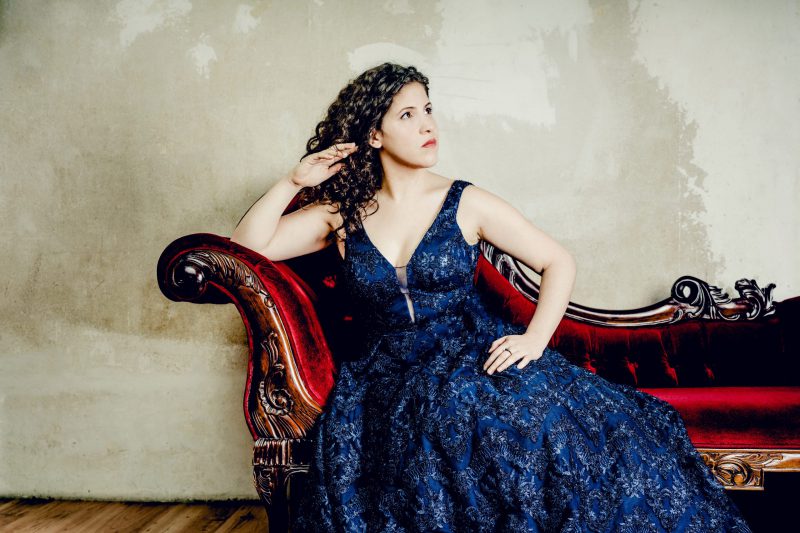
Andrej Grilc
...while Hagar Sharvit gives real weight to the character of Saint Albina. Her frank mezzo voice with a timbre as if shimmering with light gives her a real consistency...
...Mais c’est surtout Hagar Sharvit qui séduit en Albine, grâce à un timbre capiteux qui retient immédiatement l’attention...
Wieder einmal sehr eindrucksvoll erklangen dazu Lieder (gesungen von der charismatischen Hagar Sharvit, die am Klavier von Daniel Gerstenberg begleitet wurde) von Hanns Eisler (aus von Brecht getexteten Wiegenliedern für Arbeitermütter) sowie Kurt Weills „Der Abschiedsbrief“ auf einen Text Erich Kästners. Furios!
Im Blickkontakt: Benedikt von Bernstorff erlebt Hagar Sharvit im One-to-One Konzert
Hagar Sharvit sang with a lovely, evenly produced Mezzo in a gripping performance..
...a striking discovery was mezzo-soprano Hagar Sharvit, who was an outstanding Zenobia. In her showpiece aria in the first act, “Son contenta di morire,” she displayed remarkably even articulated runs, and had the extended chest range for Handel’s initial casting of the role for a contralto. Her vocal intensity went well with a forceful stage presence, especially as she alternated between spitting rage and tender sweetness in the cavatina “Empio, perverso cor!״
As for Zenobia, Ms. Sharvit had the depth of range for a role originally written for a contralto. Her lyric mezzo voice mixed eloquently with the strings in “Son contenta di moire,” her poignant acceptance of death in Act I. In another vein, she exhibited stunning vocal intensity in her aria late in Act II, “Empio perverso cor,” addressed alternately with vehemence to the treacherous tyrant, Tiridate, and with soft-breathed devotion to her disguised husband. The joyous duet of reconciliation that soon follows to close the act (and leads to the ensuing graceful dance) was also a happy union of two voices that blended well.
Die als Soldat verkleidete Emira findet in der Mezzosopranistin Hagar Sharvit eine exzellente Sängerin. Als hassefüllte Frau, die ihren von Cosroe getöteten Vater rächen will, geht sie an emotionale Grenzen, um dann aber als Geliebte Siroes wieder ganz Frau sein zu können. Ihre fulminaten Auftritte sind mitreißend, und die schwierigen Koloraturen bereiten ihr, so scheint es, keinerlei Probleme.
.. the Israeli hagar sharvit is a mezzo-soprano to keep an eye on. She sings breathtaking the spectacular beautiful coloraturas that Hasse wrote for her role, as well as singing lines full of tragedy…
Count the outstanding cast and you’ll see why this production is important from start to finish. Mezzo-Soprano, Hagar Sharvit… with a fantastic voice, a fascinating presence…
Hagar Sharvit als Emira bezaubert nicht nur mit ihrem Spiel, sondern beeindruckt mit enormer gesanglicher Finesse wie in ihrer empfindsamen Schäferinnen-Arie „Non vi piacque“ zum Abschluss des zweiten Aktes, die Mozarts spätere Arien etwa in Don Giovanni vorwegnimmt. Ihre große anklagende und an ähnliche Arien Mozarts in Idomeneo oder La Clemenza di Tito gemahnende Furien-Bravourarie Che furia, che monstro im dritten Akt lässt das Blut gefrieren.
